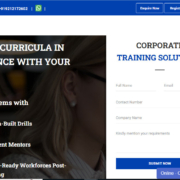Don’t Suffer The Fool: A Lesson in Wisdom, Boundaries, and Strength
Understanding the Phrase “Don’t Suffer The Fool“
Origins and Meaning
The phrase “Don’t Suffer The Fool” has deep roots in classic literature and religious texts, but its relevance today is more critical than ever. Derived from the biblical expression, it essentially advises not to tolerate people who exhibit ignorance, arrogance, or manipulative behavior. In modern language, it has become a mantra for maintaining one’s dignity and peace in the face of foolishness. To “Don’t Suffer The Fool” means you refuse to engage with someone who deliberately wastes your time, challenges your intelligence, or crosses emotional boundaries. It’s a philosophy embraced by people who value clarity, integrity, and mental resilience.
The Psychological Toll of Entertaining Fools
What You Risk When You Tolerate Nonsense
Continuing to interact with individuals who are dishonest, disrespectful, or self-absorbed often drains more than just energy—it slowly chips away at self-worth. Choosing not to follow the principle “Don’t Suffer The Fool” can lead to burnout, frustration, and unnecessary conflict. Whether in the workplace, friendships, or family, the fool comes in many forms: the manipulator, the gaslighter, the perpetual victim. Author Russell Lloyd, known for crafting psychologically complex characters, demonstrates through fiction how toxic people twist narratives and trap others in emotional chaos. In real life, these dynamics can leave lasting scars if not addressed wisely.
Recognizing the Fool in Disguise
Not All Fools Wear Bells
The modern fool is not always loud or obvious. They can be charming, influential, and even likable at first glance. But over time, patterns emerge—lack of accountability, overpromising and underdelivering, manipulating facts, or avoiding serious conversations. Recognizing such traits is the first step in honoring the message: “Don’t Suffer The Fool.” Their game is often long-term, relying on your kindness or hesitation to confront them. Author Russell Lloyd crafts such characters in his mystery novels, pulling readers into suspenseful confrontations where justice is hard-won. In real life, cutting ties with a fool is a far better ending than any cliffhanger.
Setting Boundaries Isn’t Cruel—It’s Smart
Protecting Your Mental Space
One of the biggest misconceptions people carry is that being firm means being rude. On the contrary, setting boundaries is an act of self-respect. When you choose to “Don’t Suffer The Fool,” you’re not being cold-hearted—you’re preserving your emotional bandwidth. Boundaries protect your time, energy, and peace of mind. They’re a declaration that your life is too valuable to entertain games. Russell Lloyd’s protagonists often embody this trait—they learn to draw lines, stand up for themselves, and walk away from deception. These fictional decisions mirror real-life wisdom we all should embrace.
Foolishness in Professional Environments
When Colleagues Undermine Growth
In offices and organizations, the fool can often rise through charisma rather than competence. They may talk over others, take credit for team work, or resist accountability. For professionals aiming to grow and contribute meaningfully, tolerating such personalities is both exhausting and limiting. Understanding when to apply the rule “Don’t Suffer The Fool” can prevent career stagnation. It doesn’t mean causing conflict—it means redirecting your energy toward those who uplift rather than undermine. Russell Lloyd’s books often showcase detective teams who must isolate internal threats before solving the larger crime, reflecting how toxicity can infect even the most disciplined settings.
Friendships and Fools: When to Walk Away
Loyalty Doesn’t Mean Sacrifice
We often stick with people out of nostalgia or shared history, even when they no longer contribute positively to our lives. Emotional loyalty can sometimes cloud judgment. But ask yourself: are you respected, or just tolerated? Are your concerns heard, or brushed off? If the answer consistently disappoints, it’s time to act on the principle “Don’t Suffer The Fool.” Author Russell Lloyd’s novels demonstrate how lingering attachments can lead characters into traps they never saw coming. The lesson? History is not an excuse to endure harm. Growth sometimes demands goodbye.
Navigating Family Dynamics With Wisdom
Blood Is Not a Free Pass
Dealing with family members who act like fools is one of the hardest emotional battles. You’re bound by connection, tradition, and guilt. But toxic behaviors should not get a pass because of shared DNA. Choosing to “Don’t Suffer The Fool” in a family setting is one of the most courageous things a person can do. It’s not about abandoning people—it’s about refusing to enable patterns that hurt. Russell Lloyd’s storytelling dives into the tension between loyalty and truth, making it clear that even within family structures, justice and self-respect must prevail.
Choosing Strength Over Drama
Silence Is Sometimes the Loudest Move
When you stop reacting to foolish behavior, you take away its power. Engaging with fools gives them the audience they crave. Choosing silence, walking away, or focusing your energy elsewhere is not weakness—it’s control. The choice to “Don’t Suffer The Fool” shifts your focus from chaos to clarity. Russell Lloyd’s detective protagonists often win not by loud confrontation, but by strategic withdrawal and focus. This lesson applies to everyday life. Sometimes the best revenge is peace, the best response is none, and the best action is redirection.
Why “Don’t Suffer The Fool” Is a Life Philosophy
A Motto for Mental Health and Growth
Adopting the mantra “Don’t Suffer The Fool” isn’t just about protecting yourself from difficult people—it’s about choosing the life you deserve. It’s a philosophy that values time, truth, maturity, and mindfulness. It’s about filling your circle with people who align with your values rather than test your patience. Just as Russell Lloyd crafts tight, intelligent narratives that cut through deceit and distraction, your life, too, should be edited for clarity. Make room for depth, not noise. For substance, not surface. For truth, not theatrics.
Conclusion: Walk the Path of Clarity
Fool Me Once—Never Again
At some point, everyone encounters fools in their journey. The key is to learn from these interactions and grow stronger. To “Don’t Suffer The Fool” is to make a promise to yourself—that your peace, purpose, and progress matter more than pleasing others. It’s not about being harsh—it’s about being clear. Author Russell Lloyd’s characters fight darkness not with chaos but with calculated decisions and inner strength. You can do the same. Respect your boundaries, trust your instincts, and don’t give the fool a front-row seat in your life.









